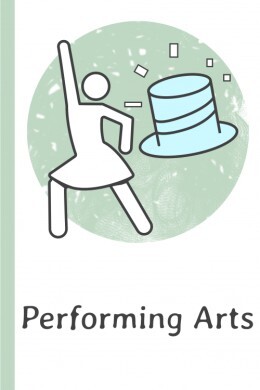a traditional Chinese dance form that originated in the Dunhuang region and features graceful movements, colorful costumes, and cultural elements from the Silk Road era

Dunhuang tanec
Zde se naučíte některá anglická slova související s asijským tancem a představením, jako jsou "dabke", "halay" a "mezmar".
Revize
Kartičky
Pravopis
Kvíz

a traditional Chinese dance form that originated in the Dunhuang region and features graceful movements, colorful costumes, and cultural elements from the Silk Road era

Dunhuang tanec
a Filipino folk dance that involves dancers nimbly navigating between striking bamboo poles, creating a distinctive tinkling sound

tanec tinikling
a classical dance form originating from Cambodia, known for its graceful and ethereal movements depicting celestial nymphs in Hindu mythology

tanec Apsara
a classical Indian dance form known for its intricate footwork, rhythmic patterns, expressive gestures, and storytelling elements, originating from northern India

Kathak
a classical Indian dance form characterized by intricate footwork, hand gestures, facial expressions, and elaborate costumes, with themes drawn from Hindu mythology

Bharatanatyam
a classical Indian dance-drama form from the state of Kerala, known for its vibrant makeup, elaborate costumes, stylized gestures, and dramatic performances depicting mythological stories

Kathakali
a traditional Japanese dance-drama including mime, dance and singing, all performed by men

kabuki
a traditional Japanese theater form with masked performers, stylized movements, and poetic chants, known for its refined and subtle performances based on mythology, history, or folktales

nó
a traditional dance that imitates the movements and beauty of a peacock, often performed with grace and flamboyance, and accompanied by elaborate costumes and props

páví tanec
a type of dance in which a woman performs quick movements with her hips and belly, originated in the Middle East

břišní tanec
Břišní tanec je tradiční blízkovýchodní tanec charakterizovaný pohyby boků a břicha.
a modern Japanese dance form characterized by slow, fluid movements, often with grotesque or surreal elements, and emphasizing themes of darkness, death, and the human condition

butó
a traditional Chinese dance performed during festive occasions, where performers mimic a lion's movements using a lion costume, accompanied by music, believed to bring good luck and fortune

lví tanec
a traditional Chinese theatrical art form combining singing, dancing, acting, and acrobatics, known for its colorful costumes, makeup, and stylized movements

Pekingská opera
a traditional Indian dance form known for vibrant masks, energetic movements, and storytelling elements, often depicting Hindu mythology or folktales

tanec Chhau
a traditional dance form from Thailand, known for its graceful movements and performed during festivities and celebrations

Menora
a traditional dance form that depicts the movements and behavior of a tiger, often performed during festivals, celebrations, or rituals

tygří tanec
a traditional Okinawan dance with energetic movements, dynamic drumming, and lively singing

Eisa
a Chinese folk dance for celebrations and good fortune

tanec Baishou
a traditional Korean mask dance with colorful masks and costumes, performed during festivals and rituals

Geommu
a traditional Saudi Arabian dance that involves synchronized movements, drumming, and chanting

ardah
a traditional Arabian dance with drumming, singing, and dancing, performed during celebrations and cultural events

yowla
a traditional Levantine folk dance with lively line and circle dances, stomping, and clapping, often performed at social gatherings and celebrations

dabke
a traditional Persian Gulf dance style performed by women with graceful movements, colorful costumes, and traditional music

khaleegy
a traditional Oromo dance and music style with lively movements, vocal chants, and traditional instruments, performed at weddings, festivals, and social gatherings

khigga
a traditional Arabian dance where performers move energetically to the beat of drums, often using sticks as props

mezmar
a traditional circle dance with coordinated movements, often performed at social events and celebrations in Eastern Europe and the Middle East

hora
a traditional Turkish and Kurdish folk dance characterized by energetic and rhythmic movements, often performed in a line or circle formation

halay
a classical Indian dance known for its intricate footwork, graceful movements, and expressive gestures, often performed in temples and cultural events in Andhra Pradesh, India

Kuchipudi
a classical Indian dance with fluid movements, intricate footwork, and expressive gestures, originating from Odisha, India, often performed in temples and cultural events

Odissi
a classical Indian dance form from Assam, known for its devotional themes, graceful movements, and expressive gestures, often performed in monasteries and cultural events

Sattriya
a classical Indian dance from Manipur known for its graceful movements, delicate hand gestures, and depiction of Hindu mythology and Manipuri culture

Manipuri
a classical Indian dance from Kerala known for its graceful movements, subtle expressions, and feminine themes from Hindu mythology

Mohiniyattam
a Chinese festive dance with a long dragon-shaped costume symbolizing good luck and prosperity, performed by a team of dancers

dračí tanec
a traditional style of Indian dance characterized by rhythmic movements of the hands and feet, often performed by women as entertainment at social gatherings and festivities

nautch
Nádvoří ožilo živými barvami a okouzlujícími rytmy tanečnic nautch, jejichž půvabné pohyby upoutaly pozornost publika.